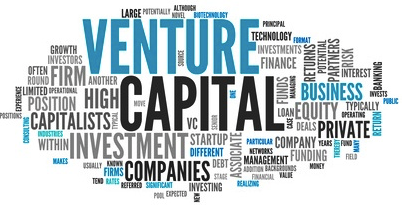The rise and rise of corporate venturing
Corporate venturing is growing strongly. In 1H2016, Corporate Venture Capital (CVC) accounted for 20% of all 3,113 venture-backed deals, with a deal value of $12.7 billion*. The number of active CVCs has doubled since 2012, with at least 100 new CVCs making their first investment during 2016. Europe accounted for 19% of the CVC deals in 2Q2016.
In addition, there are many corporations that are making venture investments from their own balance sheet. In 1H2016, balance sheet venturing accounted for another 394 deals worth $11.5 billion. One of the most active balance sheet investors, South African-based Naspers, invested $1.5 billion in 2015 whilst launching Naspers Ventures in Silicon Valley earlier this year.
So what is going on? Start-ups using new technologies and business models are disrupting all sectors. Incumbents recognise that engaging with the start-up community is necessary to stay on top of the disruptive innovation around their core business and stay ahead of the curve.
As a result, more and more corporations are launching accelerators, incubators or venture arms, hiring “Chief Innovation Officers” and spinning up internal labs — all in an effort to connect with start-ups and embed themselves more deeply in the global tech ecosystems. Because of the unique benefits they offer, CVCs have emerged as a powerful class of investors and competitors to traditional venture capital.
CVCs were traditionally only found in the tech sector, such as Google Ventures, Intel Capital and Cisco Investments, but now they can be found in virtually every sector. SR One (GlaxoSmithKline’s independent corporate healthcare venture capital fund) and Unilever Ventures are the 2nd and 4th most active CVCs in the UK respectively. Companies as diverse as JetBlue Airways and The Campbell Soup Company have launched new venture arms. NBCUniversal acquired Buzzfeed (entertainment sector), whilst Under Armour (sports clothing and accessories) and General Motors also recently acquired venture-backed start-ups.
Historically, most CVCs have been followers and “deal takers not makers,” while also largely only active in later-staged venturing. More than ever, CVCs are increasingly getting involved in deals that span all different stages — from seed to growth and even post-IPO — as well as leading those rounds. According to CB Insights, 46% of all CVC investments in 1H2016 were early stage/before breakeven (Seed or Series A funding rounds). Also, the average CVC deal size was $19 million, larger than the overall VC deal size of $13 million during 1H2016
The benefits to incumbent corporations, besides financial returns, include creating external R&D and intelligence gathering capabilities – understanding that disruption is increasingly coming from outside of the sector in which the incumbent operates.
Mobile operator CVCs Swisscom Ventures and Telstra Ventures invest in companies that are strategically important to their parent company. These investment teams looks for start-ups whose products can work for their end customers and/or where the mobile operators themselves may be users. Or both, as in the case of Telstra’s investment in Docusign.
Smart entrepreneurs are increasingly taking CVC investment. Sponsoring incumbents can often provide both scale and growth drivers through their channels and customer bases. Entrepreneurs get built-in relevant strategic advice as well as valuable operational help – day to day operating insights, active industry connections and real-time deep domain guidance. At Salesforce (one of the most active CVCs globally) each venture investment requires a business unit sponsor that commits to working with the start-up. CVCs can also provide more exit options for the entrepreneur.
Expect the corporate venturing trend to continue for the foreseeable future. Disruption is here to stay, with all sectors drawn into the Digital Vortex#, and the disruptors in turn being disrupted.
* All data in this article is from The H12016 Corporate Venture Capital Report by CB Insights.
# Digital Vortex is a term coined by Jeff Loucks, James Macaulay, Andy Noronha and Michael Wade in their book by the same name.
